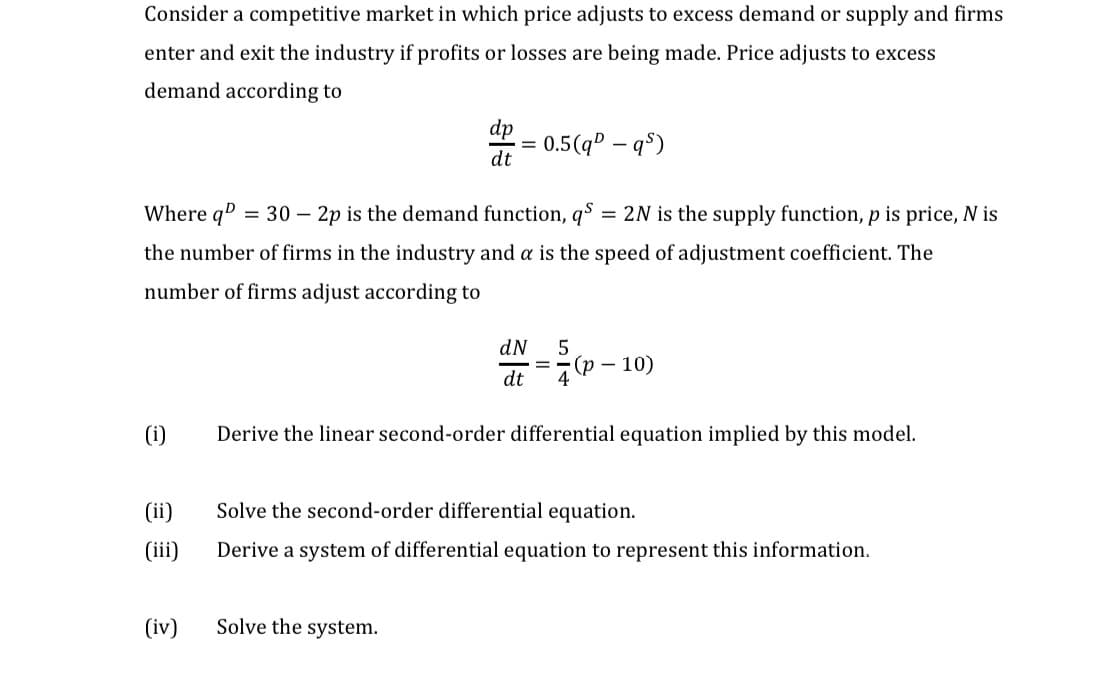Consider a competitive market in which price adjusts to excess demand or supply and firms enter and exit the industry if profits or losses are being made. Price adjusts to excess demand according to dp : 0.5(qº – qº) dt Where qD = 30 – 2p is the demand function, q$ = 2N is the supply function, p is price, N is the number of firms in the industry and a is the speed of adjustment coefficient. The number of firms adjust according to dN 5 (р — 10) 4 dt (i) Derive the linear second-order differential equation implied by this model. (ii) Solve the second-order differential equation. (ii) Derive a system of differential equation to represent this information. (iv) Solve the system.
Percentage
A percentage is a number indicated as a fraction of 100. It is a dimensionless number often expressed using the symbol %.
Algebraic Expressions
In mathematics, an algebraic expression consists of constant(s), variable(s), and mathematical operators. It is made up of terms.
Numbers
Numbers are some measures used for counting. They can be compared one with another to know its position in the number line and determine which one is greater or lesser than the other.
Subtraction
Before we begin to understand the subtraction of algebraic expressions, we need to list out a few things that form the basis of algebra.
Addition
Before we begin to understand the addition of algebraic expressions, we need to list out a few things that form the basis of algebra.

Step by step
Solved in 4 steps




